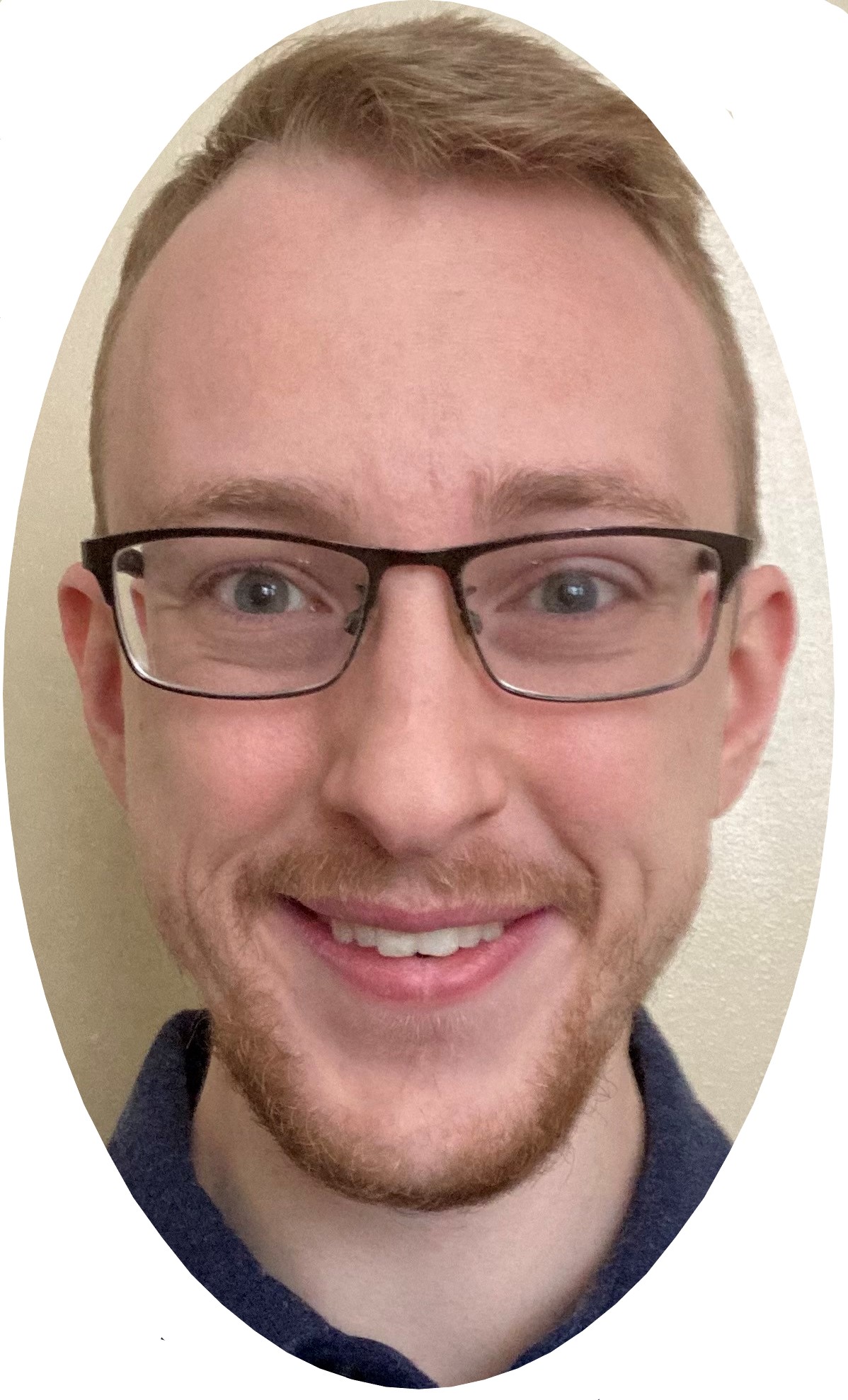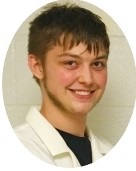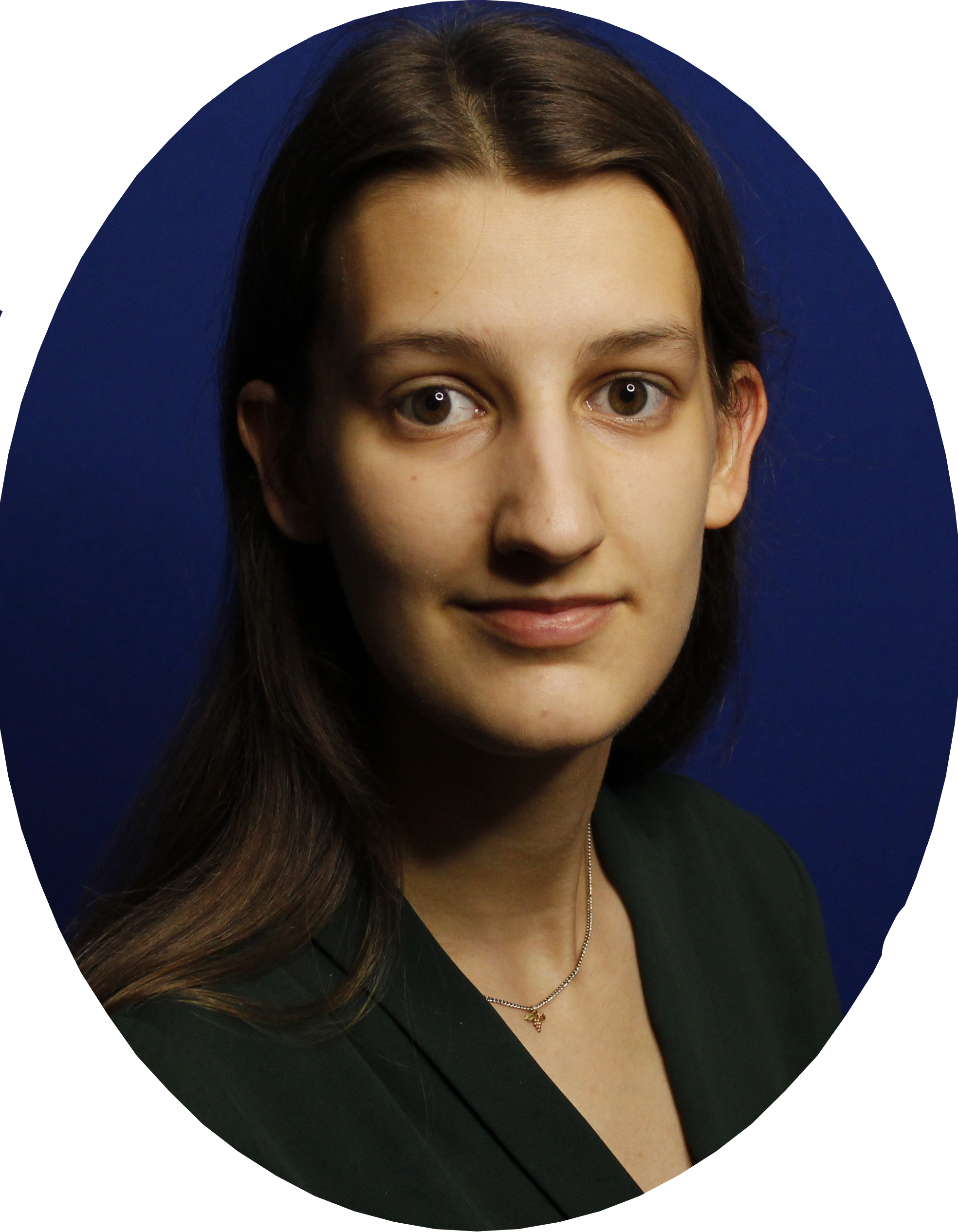ABOUT OUR RESEARCH in CUT LAB
Electronic computers have become dominant computing technology since the invention of transistor in 1947. But, inadequate response of semiconductor technology to emerging needs in performing computation has compelled researchers to investigate unconventional techniques and technologies for computation. The main research in CUT lab focuses on this direction and has two main themes. 1) We study techniques such as stochastic and approximate computing to design efficient and low-cost digital circuits for computationally intensive applications such as deep learning, big data, and the internet-of-things (IoT). 2) We investigate unconventional technologies such as biomolecular and DNA computing systems for performing computation in environments incompatible with electronic circuits.
|
MACHINE LEARNING ON EMBEDDED SYSTEMS Due to their outstanding predictive performance, deep neural networks (DNNs) have emerged as popular tools for various applications with classification and decision-making tasks. Efficient hardware implementation of DNNs plays a key role in numerous emerging fields including the Internet of things (IoT), smart mobile and implantable devices, autonomous vehicles, and so on. In particular, with the explosion of IoT, edge computing is becoming more essential; devices on the edge of IoT gather so much data that sharing them with cloud and data centers for central processing requires larger, faster, and more expensive and secure connections. Thus, it is more reliable and economical to perform real-time processing within the devices on the edge with constrained resources. This project studies the implementation of DNNs for real-time and battery-operated devices and tries to address the challenge by investigating different methods including model compression for DNNs, pruning, encoding, quantization, and approximate computing. |
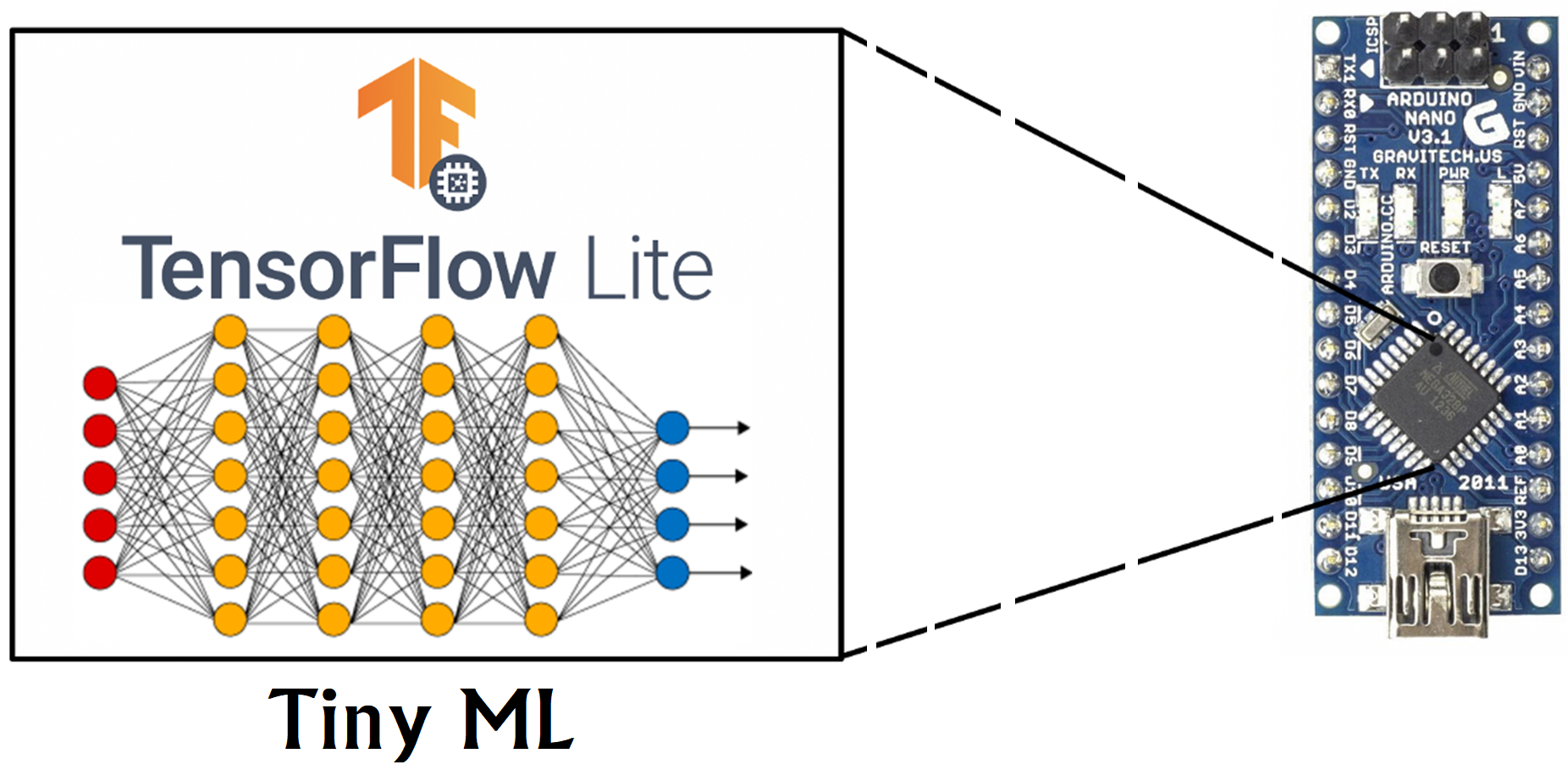 |
|
PROCESSING-IN-MEMORY USING STOCHASTIC COMPUTING Stochastic computing (SC) has emerged as an unconventional technique for performing computations by logic circuits. Rather than performing computation on binary numbers, SC circuits are designed to process unary numbers. The input and output are represented by bit streams and their values are encoded as the number of 1’s in these bit streams. Compared to traditional binary computing, SC provides several advantages including reduced hardware complexity and fault-tolerant computing. Because of these advantages, SC has been considered as an appropriate alternative to binary computing in different applications such as image processing, neural networks, low-density parity check (LDPC) decoding, and digital filters. One main advantage of SC is its very low hardware-complexity that could result in cost-efficient computing circuits. The most common way to demonstrate the low hardware-cost of SC is its implementation of multiplication: a simple AND gate implements multiplication in SC. Our group works on new application-driven architectures based on SC and also efficient techniques to generate appropriate input bit streams for SC circuits.
|
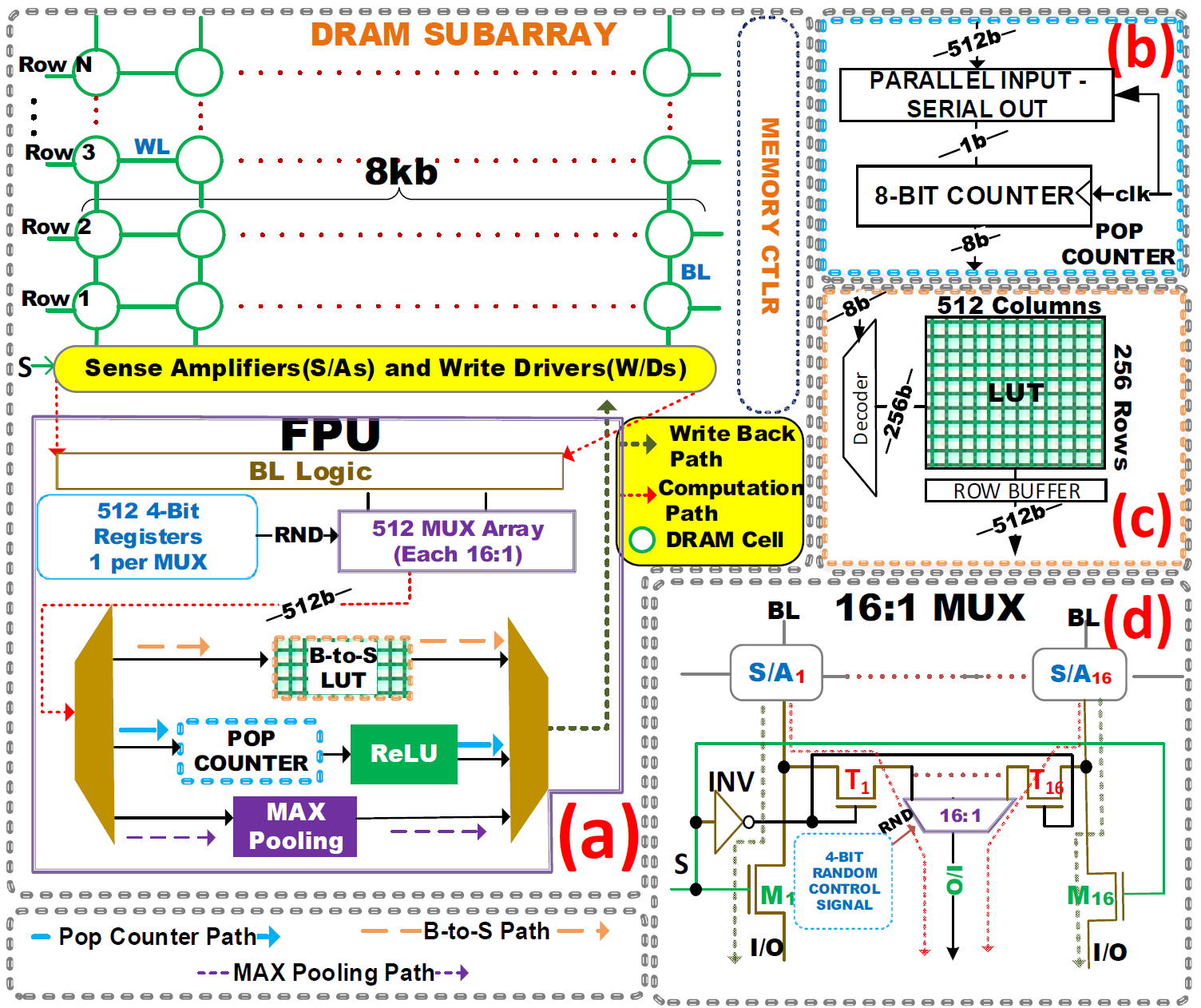 |
|
FPGA and VLSI ARCHITECTURES FOR DIGITAL SIGNAL PROCESSING Electronic circuits are used to process various types of signals in applications. We try to design low-power and low-area VLSI and FPGA circuits for resource-constraint environments such as mobile and implantable devices. Our research considers hardware optimization of DSP systems in different levels from algorithm to circuit.
|
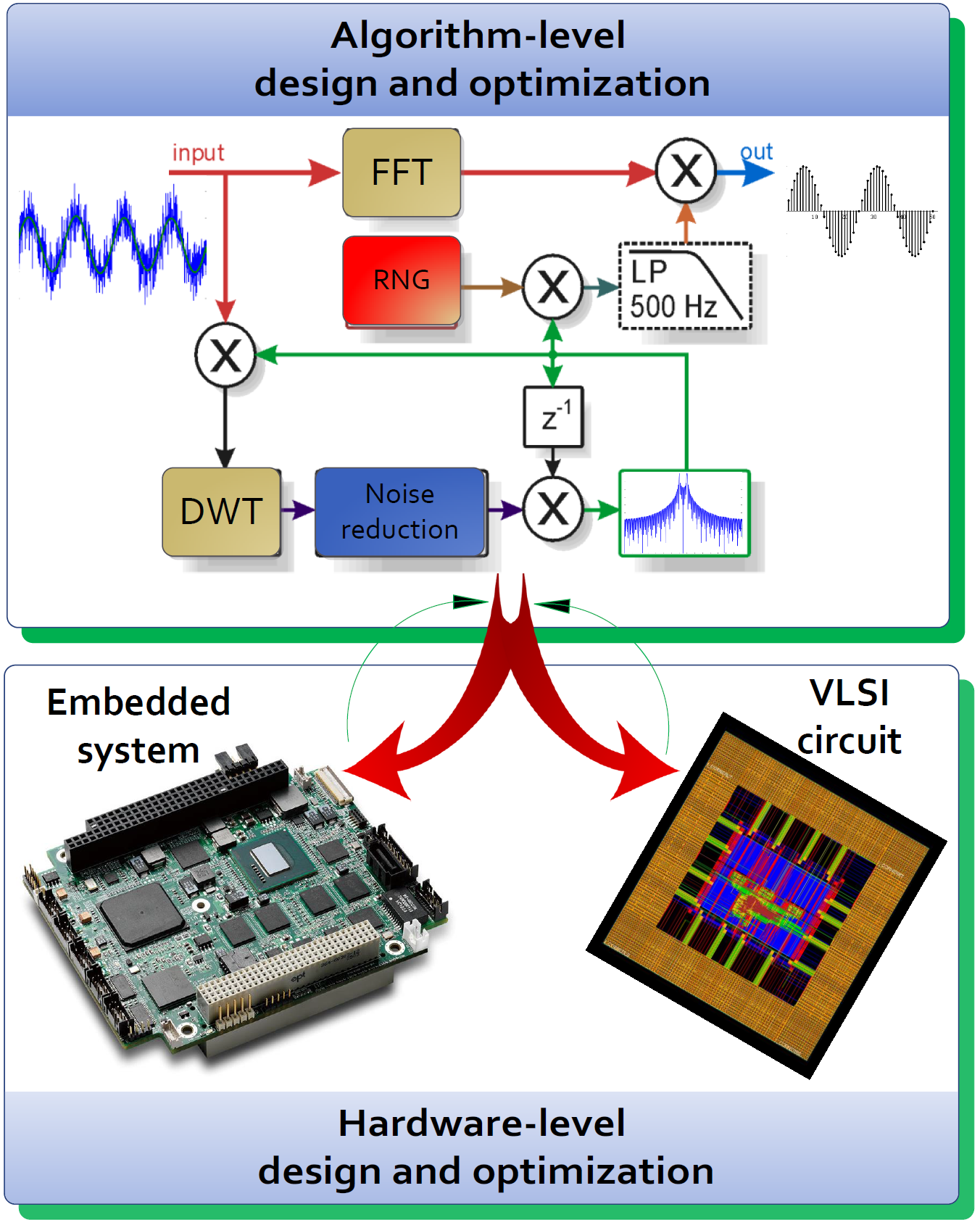 |
|
BIOMOLECULAR AND DNA COMPUTING AND STORAGE
When we hear about computation and information processing the first thing that comes to our minds is man-made electronic processing systems. However, computation is not a man-made phenomenon and, in fact, the most powerful information processing systems have been provided by nature. For example, complex circuits within cells - can have over 30,000 distinct states; - their computational efficiency per operation is 4 to 5 orders of magnitude more efficient than nano-scale GHz electronic processors regarding energy and size; - they are massively parallel such that more than 10,000,000 biochemical reactions fire in a human cell each second. Our research is about the exploration of computational power in bio-molecular systems. Since the chemical reaction network (CRN) theory is the fundamental model in the study of molecular reactions, we try to understand and discover the information processing abilities of CRNs and accordingly design new molecular systems for particular applications. One part of this research is the design of digital signal processing algorithms by CRNs. Another part is the computation of mathematical functions by CRNs using a new encoding of information so called fractional representation. In order to address practical issues for biological implementation of these designs, we map the CRNs to DNA reactions using DNA strand-displacement mechanism. Applications for our research are drug delivery and monitoring, smart and personalized drugs. Further, we work on encoding and storing information by DNA molecules as they have the potential to be used as future memories with longer retention, higher density and lower power consumption compared to semiconductor memories. Also we are interested in the interface of biological circuits (e.g., DNA and RNA molecules) with semiconductor circuits and sensors.
|
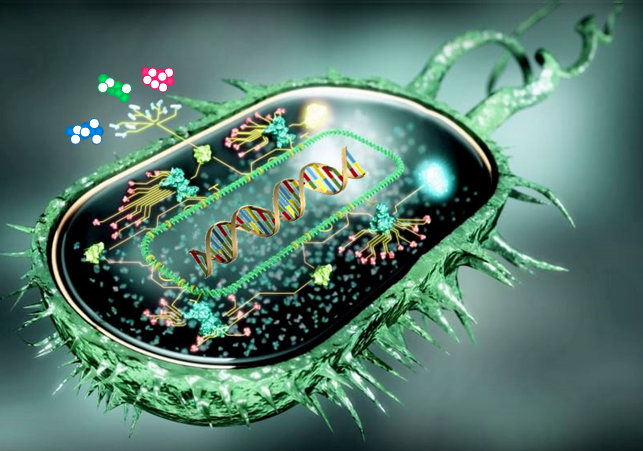 |

